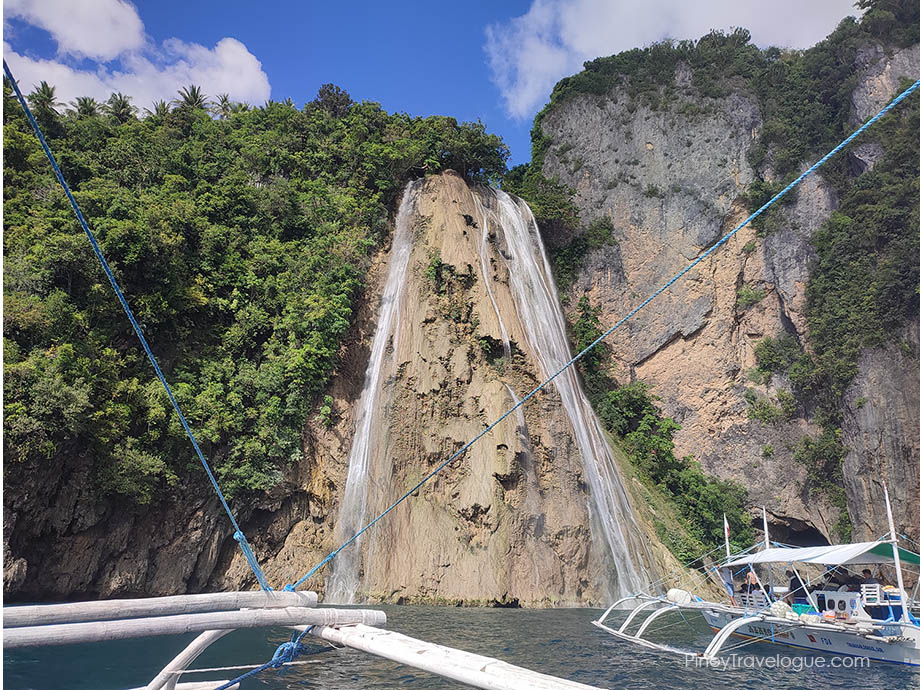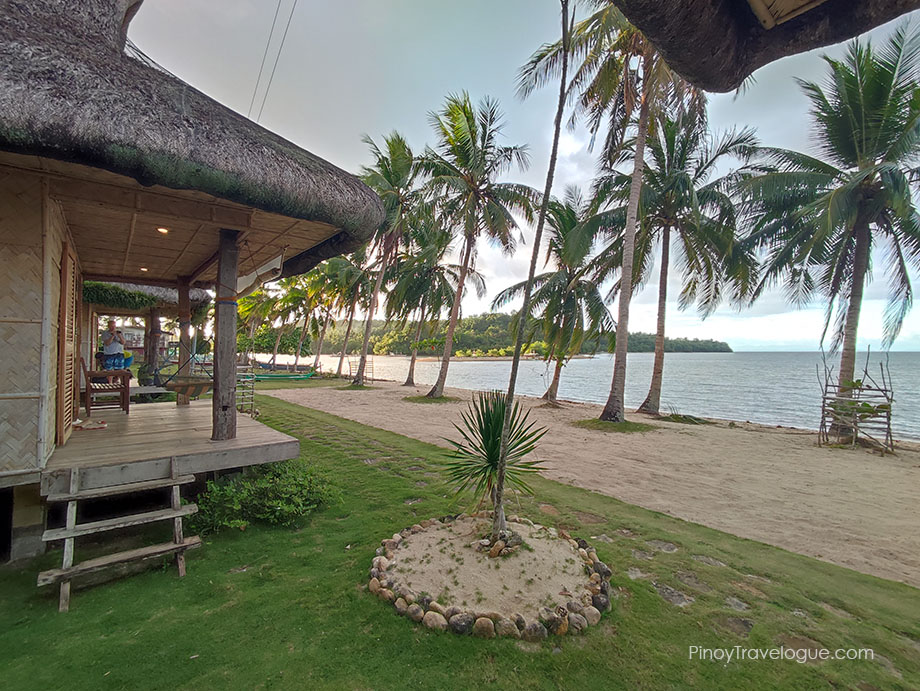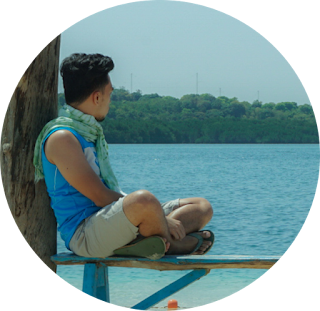 |
The early wake-up call shortened what could have been a sound sleep at last. The day before Ticao Island, we got up much earlier since we had to leave Albay for Sorsogon for the phenomenal yet exhausting whale shark interaction in Donsol, to cover the regional travel fair in Sorsogon City—this was a media tour with the Tourism Promotions Board—and thereafter attend the event’s dinner party that lasted until before midnight. It was a long, hectic day. The next day’s early call time was because of the lengthy nautical distance between Ticao Island and Dancalan Beach (Donsol) where we spent the night after the party.
Ticao Island
Ticao’s gateway in Sorsogon, unless under a special arrangement with resorts and tour operators, are the ports of Pilar and Bulan located farther south of the province. From Donsol, we cruised southward, navigating the midpoint of Burias Pass and Ticao Pass—the two straits that separate Bicol peninsula from the islands of Burias and Ticao, respectively.
Ticao Island is the smallest among the three major islands that make up the Province of Masbate. The other two are Burias Island in the north and the far larger Masbate Island located west of Ticao and the seat of the provincial government. Four municipalities—Batuan, Monreal, San Jacinto and San Fernando—occupy Ticao Island’s 334 square kilometers of land and its surrounding waters.
Monreal Stones
Beneath the island’s soil were unearthed thousands of pre-colonial artifacts. Among the rare finds, called the “Monreal Stones,” were found unwittingly by elementary students in the town of Monreal, when their teacher asked them to gather stone blocks that they can step on before entering the classroom when it rains. The stones that were later found out to contain engraved Baybayin scripts were used, for more than a decade, to scrape off mud from shoes before it reached the experts in 2012 and thereafter determined its historical significance.
 |
| Monreal Stones | via National Museum of the Philippines Facebook page |
The two irregular shaped limestone slabs—the bigger piece weighs 30 kilos and measures 11 centimeters thick, 54 centimeters long and 44 centimeters wide, while the smaller was 6 centimeters thick, 20 centimeters long and 18 centimeters wide—are now among the centerpieces at the Baybayin section of the National Museum of Anthropology in Manila.
Displayed along with other artifacts that contain engravings of ancient Philippine script such as the Laguna Copperplate Inscription and the ivory seals and silver paleograph of Butuan, Ticao Island’s Monreal Stones are the only relic of its kind—a stone—in the gallery. They are the first stone artifacts with embossed Baybayin script to have surfaced in the country.
 |
| Approaching the beaches of Halea Nature Park |
Halea Nature Park
The highlight of our trip was to witness Ticao Island’s unspoiled, natural flair. We island-hopped the northern part of the island for this endeavor.
After about two hours of crossing the Ticao Strait and getting soaked in the sight of Ticao’s imposing s in the later part of the boat ride, the vista shifted from black-and-brown rocks that towers above the deep-blue sea into a mix of white sands, turquoise waters and verdant foliage. What dawned on us when our boat slowed down and made a turn was Halea Nature Park—a small cove with two short beaches, tiny caves and a lush islet right in the middle of the cove’s mouth.
The nature park nestles south of San Miguel Island that is located off the northern tip of main Ticao Island, part of Monreal town. What awaited us there, aside from a hearty boodle fight lunch by the beach, was the chance of sighting baby sharks that swim just a few meters from the shore. Halea’s environs are breeding grounds for these harmless creatures and we were fortunate to spot some of them during that searing afternoon.
If one is not lucky enough to see a single juvenile shark, the park's vibrant underwater life—easily seen through the crystalline waters—does not disappoint either.
Halea Nature Park is very much pristine. The lack of tourist facilities in the vicinity—only a small sundry store stands on the beach—apparently contributes to its upkeep so it continues to beckon both beach bums and freedivers.
 |
| Catandayagan Falls |
Catandayagan Falls
The 30-minute snorkeling and shark-hunting were enough to burn the calories obtained from that afternoon’s feast. We hit the sea for the next stop—a towering waterfall situated northwest of Ticao Island.
Unlike most waterfalls in the country, Catandayagan Falls does not require a trek across thick jungles. The sight of it ensued right away, in less than an hour of the ride from Halea, with its freshwaters flowing down along the seaside cliff and directly cascading it into the saline waters of Masbate Pass (yet another strait in the province, the channel between the islands of Ticao and Masbate).
Catandayagan Falls is among the very few waterfalls in the world that empties out into the sea or the ocean. According to our boatman, and confirmed by some drone shots, the water curtain comes from a small freshwater lake amidst a dense forest on the top of the cliff.
I’ve been meaning to visit Ticao Island long before this post-pandemic trip happened. The reasons why I had to put it off already escaped my memory, but the reason why I wanted to, I will always remember, is the stunning uniqueness of Catandayagan Falls. I was in awe. I gazed as we left until the rugged cliffs hid the waterfalls from sight, when our boat took a turn en route to the next island.
 |
| Burobangkaso Rock Formation |
Burobangkaso Islet
We already had a glimpse of Burobangkaso Islet while on our way to Catandayagan Falls. We sailed past it and visited it last since it was the island nearest the resort where we would spend the night. It’s just the way our boatman styled this island hopping itinerary.
Burobangkaso is dotted at its tip with a rock formation of striking appearance—giant slabs of flat rocks are neatly stacked, like books, forming a towering platform. A certain amount of physical strength is needed to scale the scattered boulders below the rock formation and reach the topmost rock. On top is a vantage point for a calming 360-degree view of Ticao Pass and the nearby islands, though it may not be as calming on the way up if climbed up on a scorching afternoon.
Today’s appearance of Burobangkaso Rock Formation is an example of a “beautiful disaster.” The scattered rocks at the base were the aftermath of Typhoon Tisoy (international name, Kammuri) when it ravaged the Bicol Region in December 2019. Burobangkaso Islet is also a favorite among locals. Some families were having a picnic upon the coarse, cream sands of the islet during our visit.
 |
| Beachfront cabanas of Ticao Island Resort |
Ticao Island Resort, to Dive or Not to Dive
The searing climb to the top of Burobangkaso got the best of me that the boat ride had become a languorous two hours of sailing onto Ticao Island Resort, a popular beach and diving resort on the eastern side of Ticao Island.
Surrounded by several dive sites, Ticao Island’s main draw to divers is the underwater atoll of about 8 hectares in size called the Manta Bowl Shoal, named so because the atoll resembles the shape of a bowl and it is where divers can find manta rays all year round. Bluestreak cleaner wrasse and remora (suckerfish) abound in the site, thus serving as a cleaning station for manta rays and other large ocean species.
Since Manta Bowl shares the same waters with Donsol, whale sharks also frequent the area. Other sharks like thresher, hammerhead and tiger sharks are also occasionally sighted there. There is no other place in the Philippine waters like the Manta Bowl.
Diving was not part of our itinerary. Not all of us were licensed divers and the Manta Bowl requires advanced experience in scuba diving. We reached the resort at sunset and just wallowed in the resort's manicured expanse that was also lined up with palm trees and rustic beachside accommodation. Some of us lazed at the hammocks installed around the resort as we waited for dinner. After the hefty evening meal, we retired to our lovely air conditioned beachfront cabanas. I was finally able to catch enough sleep following a day of exploring Ticao Island’s distinctive natural gems and reveling in its untouched tropical beauty.
This article was originally published in the September 2022 issue of Enrich magazine (with some minor revisions).


